
 i_need_contribute
i_need_contribute
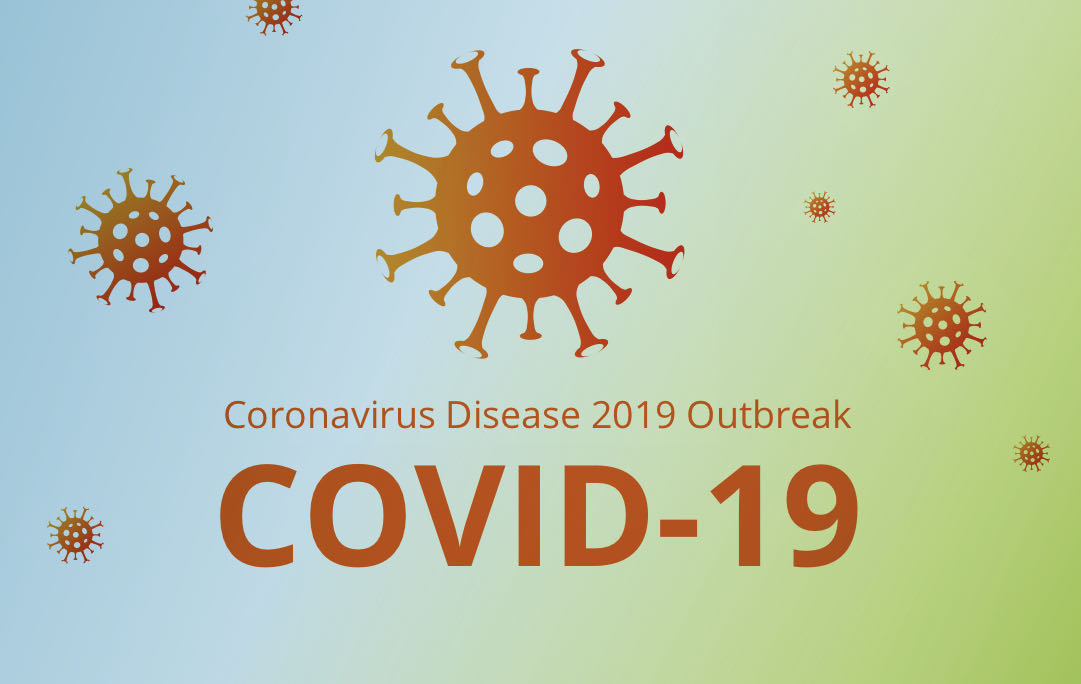
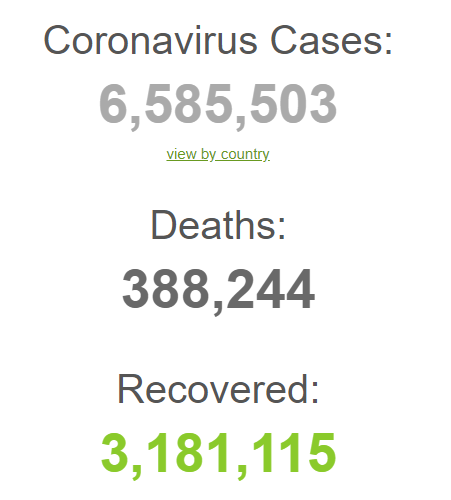

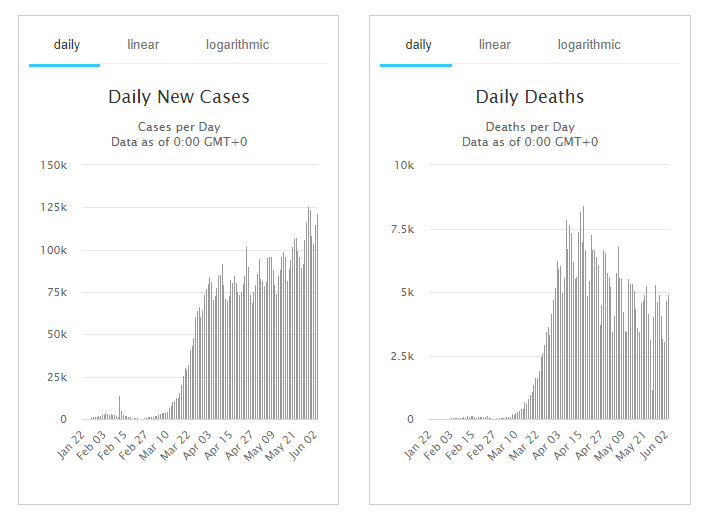
|
Country, |
Total |
New |
Total |
|
World |
6,562,695 |
+121,413 |
386,788 |
|
1,901,783 |
+20,578 |
109,142 |
|
|
583,980 |
+27,312 |
32,547 |
|
|
432,277 |
+8,536 |
5,215 |
|
|
287,406 |
+394 |
27,128 |
|
|
279,856 |
+1,871 |
39,728 |
|
|
233,836 |
+321 |
33,601 |
|
|
216,824 |
+9,633 |
6,088 |
|
|
184,425 |
+334 |
8,699 |
|
|
178,914 |
+4,030 |
4,894 |
|
|
166,422 |
+867 |
4,609 |
|
|
160,696 |
+3,134 |
8,012 |
|
|
151,677 |
+352 |
29,021 |
|
|
113,628 |
+4,942 |
1,275 |
|
|
97,326 |
+3,891 |
10,637 |
|
|
93,085 |
+675 |
7,498 |
|
|
91,182 |
+2,171 |
579 |
|
|
83,021 |
|
4,634 |
|
|
80,463 |
+4,065 |
1,688 |
|
|
62,160 |
+1,901 |
45 |
|
|
58,685 |
+70 |
9,522 |
|
|
55,140 |
+2,695 |
746 |
|
|
46,733 |
+86 |
5,977 |
|
|
45,116 |
+861 |
248 |
|
|
40,966 |
+552 |
3,486 |
|
|
40,803 |
+2,214 |
4,542 |
|
|
37,525 |
+1,713 |
792 |
|
|
36,405 |
+569 |
24 |
|
|
36,359 |
+571 |
270 |
|
|
33,354 |
+1,521 |
1,045 |
|
|
33,261 |
+366 |
1,447 |
|
|
30,893 |
+19 |
1,921 |
|
|
29,359 |
+710 |
230 |
|
|
28,615 |
+1,079 |
1,088 |
|
|
28,233 |
+684 |
1,698 |
|
|
25,111 |
+45 |
1,659 |
|
|
24,823 |
+483 |
735 |
|
|
24,687 |
+292 |
1,115 |
|
|
19,748 |
+751 |
974 |
|
|
19,669 |
+152 |
1,296 |
|
|
19,268 |
+949 |
583 |
|
|
18,040 |
+288 |
516 |
|
|
17,377 |
+92 |
291 |
|
|
17,267 |
+758 |
294 |
|
|
16,986 |
+56 |
900 |
|
|
16,771 |
+12 |
670 |
|
|
14,609 |
+514 |
357 |
|
|
13,537 |
+738 |
67 |
|
|
12,815 |
+504 |
20 |
|
|
11,796 |
+225 |
48 |
|
|
11,771 |
+37 |
580 |
|
|
11,590 |
+49 |
273 |
|
|
11,523 |
+69 |
245 |
|
|
11,166 |
+347 |
315 |
|
|
10,991 |
+460 |
376 |
|
|
10,524 |
+515 |
170 |
|
|
9,733 |
+107 |
673 |
|
|
9,438 |
+74 |
325 |
|
|
8,795 |
+247 |
310 |
|
|
8,548 |
+251 |
38 |
|
|
8,477 |
+22 |
237 |
Source:https://www.worldometers.info/coronavirus/
Why do some people infected with the coronavirus suffer only mild symptoms while others become deathly ill?
Geneticists have been scouring our DNA for clues. Now, a study by European scientists is the first to document a strong statistical link between genetic variations and Covid-19, the illness caused by the coronavirus.
Variations at two spots in the human genome are associated with an increased risk of respiratory failure in patients with Covid-19, the researchers found. One of these spots includes the gene that determines blood types.
Having Type A blood was linked to a 50 percent increase in the likelihood that a patient would need to get oxygen or to go on a ventilator, according to the new study.
The findings suggest that relatively unexplored factors may be playing a large role in who develops life-threatening Covid-19. The new study is currently going through peer review.
It’s not the first time Type A blood has turned up as a possible risk. Chinese scientists who examined patient blood types also found that those with Type A were more likely to develop a serious case of Covid-19. No one knows why.
The malaria drug hydroxychloroquine did not prevent Covid-19 in a rigorous study of 821 people who had been exposed to patients infected with the virus, researchers from the University of Minnesota and Canada are reporting Wednesday.
The study was the first controlled clinical trial of hydroxychloroquine, a drug that President Trump has repeatedly promoted and said he had taken himself to try to ward off the virus.
Conducted in the United States and Canada, the trial was the first to test whether the drug could prevent illness in people who have been exposed to the virus. This type of study, in which patients are picked at random to receive either an experimental treatment or a placebo, is considered the most reliable way to measure the safety and effectiveness of a drug.
“The take-home message for the general public is that if you’re exposed to someone with Covid-19, hydroxychloroquine is not an effective post-exposure, preventive therapy,” the lead author of the study, Dr. David R. Boulware of the University of Minnesota, said in an interview.
The results are being published in The New England Journal of Medicine.
The president’s promotion of the drug, and the backlash against it, have politicized medical questions that would normally have been left to researchers to answer objectively. The drug is approved to treat rheumatoid arthritis and lupus, as well as malaria, and is considered safe for those patients as long as they do not have underlying abnormalities in their heart rhythm.
Studies in very ill coronavirus patients have linked the drug — especially when combined with the antibiotic azithromycin — to dangerous heart-rhythm disorders, and both the Food and Drug Administration and the National Institute of Allergy and Infectious Diseases have warned that it should not be used outside of clinical trials or in hospitals.

A scientist in Moderna’s lab in Cambridge, Mass., in February. The Trump administration tapped Moderna and four other companies as the most likely candidates to produce a vaccine for the coronavirus.Credit...David L. Ryan/The Boston Globe, via Getty Images
The Trump administration has selected five companies as the most likely candidates to produce a vaccine for the coronavirus, senior officials said, a critical step in the White House’s effort to deliver on its promise of being able to start widespread inoculation of Americans by the end of the year.
By winnowing the field in weeks from a pool of about a dozen companies, the government is betting that it can identify the most promising vaccine projects at an early stage, speed along the process of determining which will work and ensure that the winner or winners can be quickly manufactured in huge quantities and distributed across the country.
Noah Weiland and David E. Sanger of The New York Times report that the five companies are Moderna, a Massachusetts-based biotechnology firm, which Dr. Anthony S. Fauci said he expected would enter the final phase of clinical trials next month; the combination of Oxford University and AstraZeneca, on a similar schedule; and three large pharmaceutical companies: Johnson & Johnson, Merck and Pfizer. Each is taking a somewhat different approach.
The announcement of the decision will be made at the White House in the next few weeks, government officials said. Dr. Fauci, the federal government’s top epidemiologist and the director of the National Institute of Allergy and Infectious Diseases, hinted at the action when he told a medical seminar on Tuesday that “by the beginning of 2021, we hope to have a couple of hundred million doses.”
Despite promising early results and the administration’s strong interest in nurturing a government-industry partnership, substantial hurdles remain. Many scientists consider Mr. Trump’s goal of having a vaccine widely available by early next year to be optimistic, if not unrealistic. Vaccine development is notoriously difficult and time-consuming; the record is four years, and a decade is not unusual.

A demonstration in Venice on Monday against the construction of a new pier that would bring boatloads of tourists into one of the city’s last livable neighborhoods. Credit...Alessandro Grassani for The New York Times
Italy lifted travel restrictions on Wednesday, hoping to restore some of the tourism that usually makes up 13 percent of the country’s gross domestic product. But it is clear that some Italians have new skepticism about that level of economic dependence.
The country’s addiction to tourism has priced many residents out of historic centers and crowded out creativity, entrepreneurialism and authentic Italian life.
Of all Italy’s cities, Venice — a tourism cash cow worth €3 billion, or about $3.3 billion — changed most drastically during the months of lockdown.
Without visits by giant cruise ships and hordes of day-trippers, the city’s alleys, porticoes and campos reverberated with conversations in Italian, and even with the Venetian dialect. The lack of big boats reduced the waves on the canals, allowing residents to take their small boats and kayaks out on cleaner water. Some even ventured to St. Mark’s Square, which they usually avoid.
“This is a tragedy that has touched us all, but Covid could be an opportunity,” said Marco Baravalle, a leader of the anticruise ship movement in Venice who called the absence of big boats “magnificent.”

Coronavirus patients on ventilators at Elmhurst Hospital in Queens, N.Y., last month.Credit...Erin Schaff/The New York Times
Long considered the world’s premier public health agency, the Centers for Disease Control and Prevention made missteps that undermined America’s response to the most urgent public health emergency in the agency’s 74-year history — a virus that has killed more than 100,000 people in the United States.
A New York Times review of thousands of emails, and interviews with more than 100 state and federal officials, public health experts, C.D.C. employees and medical workers, revealed how the pandemic shook longstanding confidence in the agency and its leader, Dr. Robert R. Redfield. These are some of the key findings.
Aging data systems left the agency with blind spots. As the virus began to spread in the United States in January, the C.D.C.’s response was hampered by an antiquated data system and a fractured public health reporting system. The C.D.C. could not produce accurate counts of how many people were being tested, compile complete demographic information on confirmed cases or even keep timely tallies of deaths.
The C.D.C. clashed with White House aides who viewed them as the “deep state.” As the crisis deepened, tensions between the agency and the White House increased, with aides to Mr. Trump referring to the scientists at the C.D.C. as members of the “deep state” who were eager to wound him politically by leaking to the press. At the same time, some C.D.C. employees watched with growing alarm as Mr. Trump, facing criticism for his administration’s response, repeatedly undermined the agency. And they paled at what they saw as meddling by politically motivated Trump aides.
The C.D.C.’s culture slowed its response. The culture at the C.D.C. — risk-averse, perfectionist and ill suited to improvising in a quickly evolving crisis — shaped its scientists’ ambitions and contributed to some of its failures as it tried to respond to the pandemic.
Redfield felt he was ‘on an island’ between his agency and the White House. The pandemic underscored the need for Dr. Redfield to manage the mercurial demands of the president who appointed him and the expectations of the career scientists at the agency he leads. Although he is on the White House coronavirus task force, Dr. Redfield soon found himself eclipsed by Dr. Anthony S. Fauci, the nation’s chief — and most famous — infectious disease specialist, and Dr. Deborah L. Birx, an AIDS expert and former C.D.C. physician.
Confusing guidance left doctors, public officials and others to look elsewhere. The C.D.C. struggled at times to provide clear and timely guidance, leading many to say they looked to universities, mailing lists or online research articles for detailed recommendations about how to safely care for infected patients.

Virgina Dressler spends her days at home in Newbury, Ohio, caring for her 3-year-old twins while managing her career as a digital librarian.Credit...Da'Shaunae Marisa for The New York Times
As the pandemic upends work and home life, women have carried an outsized share of the burden: They are more likely to lose a job and more likely to shoulder the responsibilities of closed schools and day care. The gradual reopening threatens to compound their problems — forcing them out of the labor force or into part-time jobs while increasing their duties at home.
In February, right before the outbreak began to spread in the United States, working women passed a milestone: making up more than half of the nation’s civilian nonfarm labor force. But the effects of the pandemic could last a lifetime, reducing their earning potential and work opportunities.
“We could have an entire generation of women who are hurt,” Betsey Stevenson, a professor of economics and public policy at the University of Michigan, said of pregnant women and working mothers whose children are too young to manage on their own. “They may spend a significant amount of time out of the work force, or their careers could just peter out in terms of promotions.”
Women who drop out of the work force to take care of children often have trouble returning, and the longer they stay out, the harder it is.
The economic crisis magnifies the downsides. Wage losses are much more severe and enduring when they occur in recessions, and workers who lose jobs now are likely to have less secure employment in the future.
“Even the limited gains made in the past decades are at risk of being rolled back,” warned a recent report from the United Nations on the effects of the virus on women.

Kentucky State Troopers fired tear gas at demonstrators in Louisville, Ky., on Monday.Credit...Luke Sharrett for The New York Times
The billowing clouds of tear gas that the authorities are sending through protest crowds across the United States may increase the risk that the virus could spread through the gatherings.
Along with the immediate pain that can cause watering eyes and burning throats, tear gas may cause damage to people’s lungs and make them more susceptible to getting a respiratory illness, according to studies on the risks of exposure. The gas can also incite coughing, which can further spread the virus from an infected person.
Sven-Eric Jordt, a researcher at Duke University who has studied the effects of tear gas agents, said he had been shocked to watch how much the authorities had turned to the control method in recent days.
“I’m really concerned that this might catalyze a new wave of Covid-19,” Mr. Jordt said.
The protests against police brutality and racism after the killing of George Floyd in Minneapolis have already raised alarm among health experts who have watched as protesters gathered by the thousands in cities around the country. While some demonstrators have worn masks and gloves, the crowds have often involved shouting and chanting in close quarters — a risky activity for a virus spread by respiratory droplets. Epidemiologists have said the protests would almost certainly lead to more cases.
Because of delays between exposure and the start of symptoms, the impact of protests on the virus likely won’t be known for several weeks.
On Wednesday, Gov. Andrew M. Cuomo of New York said that the virus “is still in people and in society.”
“We’re still battling that,” he said.
Source:https://www.nytimes.com/2020/06/03/world/coronavirus-live.html
From CNN's Sophia Saifi in Islamabad
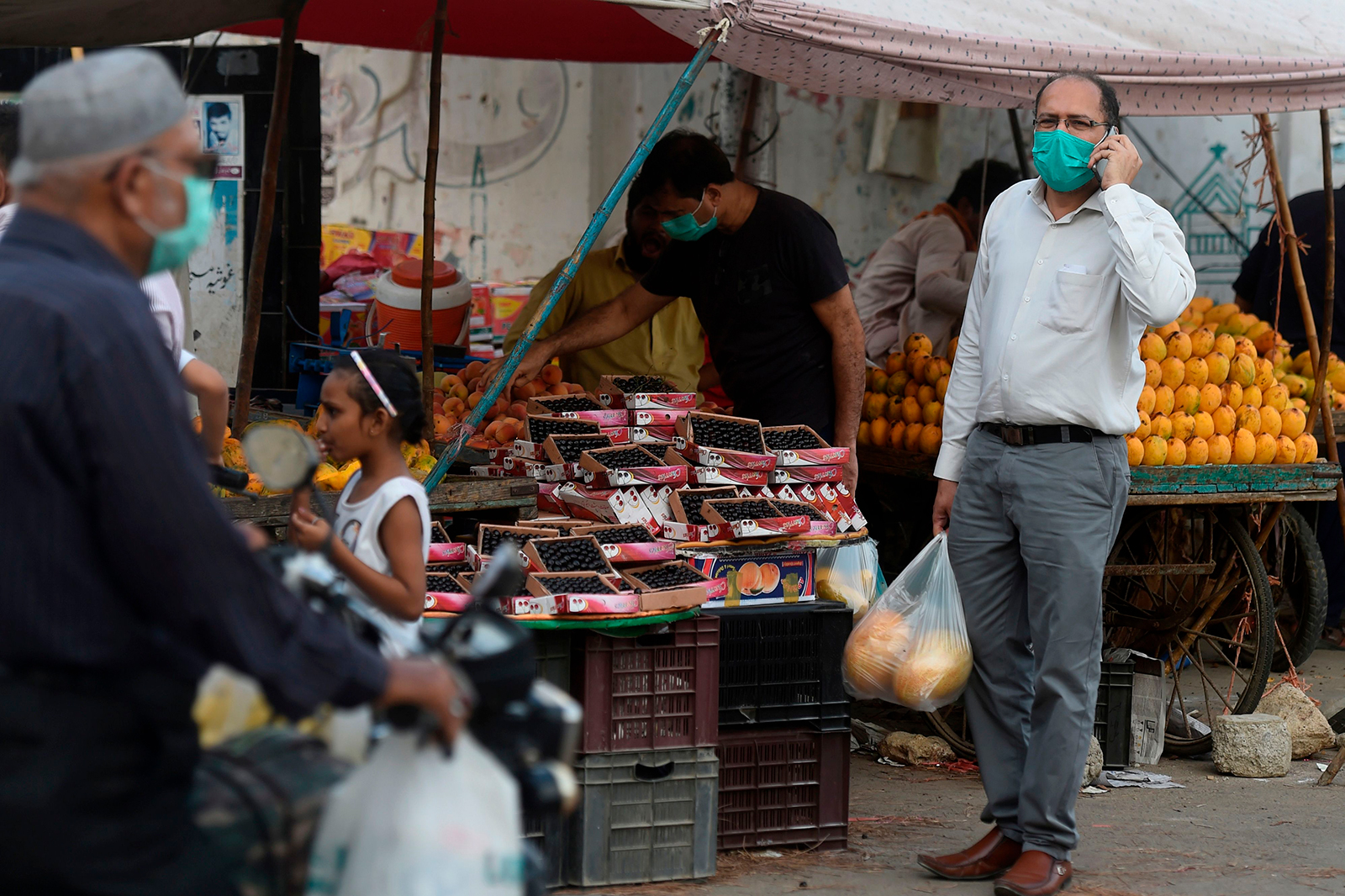
People wearing facemasks buy fruit in Karachi, Pakistan, on June 2. Asif Hassan/AFP/Getty Images
Pakistan now has 85,264 confirmed cases of Covid-19, authorities said, becoming the latest country to overtake the total in China, where the pandemic began.
At least 1,770 virus-related deaths have also been recorded in Pakistan.
The country lifted its nationwide lockdown in early May, though the rate of new infections continues to rise. That could be in part due to an increase in testing by the government, especially within the last 24 hours.
Prime Minister Imran Khan announced earlier this week that his government is working on measures to reopen domestic tourism. For now, hotels and restaurants remain closed.
China has reported 84,160 coronavirus cases and 4,638 deaths.
From CNN's Annie Grayer
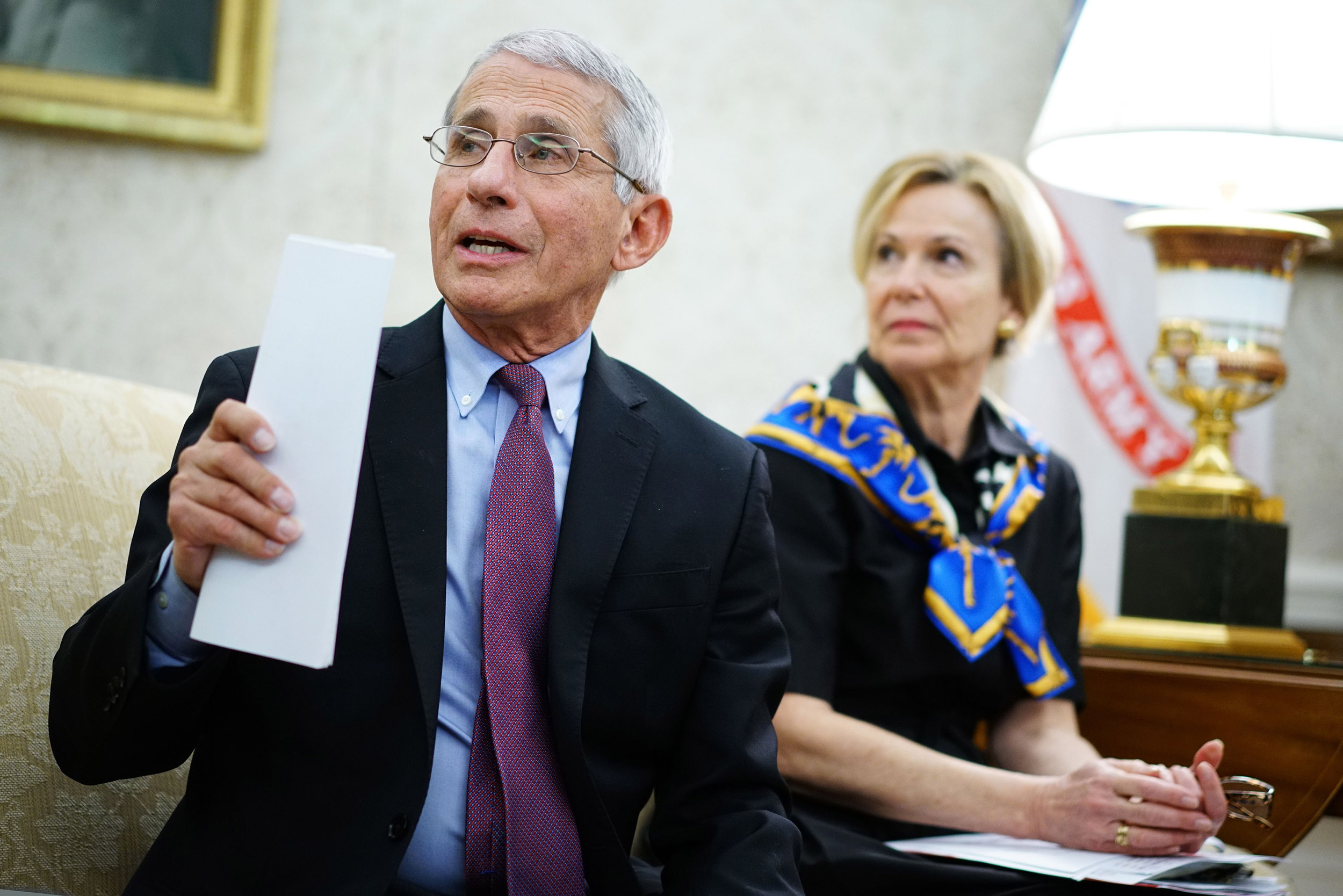
Dr. Anthony Fauci, left, with White House Coronavirus Task Force response coordinator Deborah Birx in Washington, DC on April 29. Mandel Ngan/AFP/Getty Images
Dr. Anthony Fauci, the director of the US National Institute for Allergy and Infectious Diseases, said he believes it's a "bit of a reach" to keep schools closed in the fall because of coronavirus safety concerns for children.
In a phone interview with CNN Wednesday, Fauci said children tend to have milder symptoms -- or even no symptoms -- when they are infected with Covid-19.
What's not yet clear, however, is whether children get infected as frequently as adults and whether they pass the infection on to others as easily. Fauci said ultimately, the decision to reopen schools needs to be predicated on the level of infection in each community.
“I hesitate to make any broad statements about whether it is or is not quote 'safe' for kids to come back to school," Fauci told CNN. "When you talk about children going back to school and their safety, it really depends on the level of viral activity, and the particular area that you're talking about. What happens all too often, understandably, but sometimes misleadingly, is that we talk about the country as a whole in a unidimensional away.”
Fauci also said that schools need to “be creative” with classroom planning. He suggested that one option is to space out children at every other desk, or every third desk, to maintain proper social distancing.
“In some situations there will be no problem for children to go back to school,” he said. "In others, you may need to do some modifications. You know, modifications could be breaking up the class so you don't have a crowded classroom, maybe half in the morning, half of the afternoon, having children doing alternate schedules. There's a whole bunch of things that one can do.”
From CNN's Matt Rivers and Natalie Gallón in Mexico City
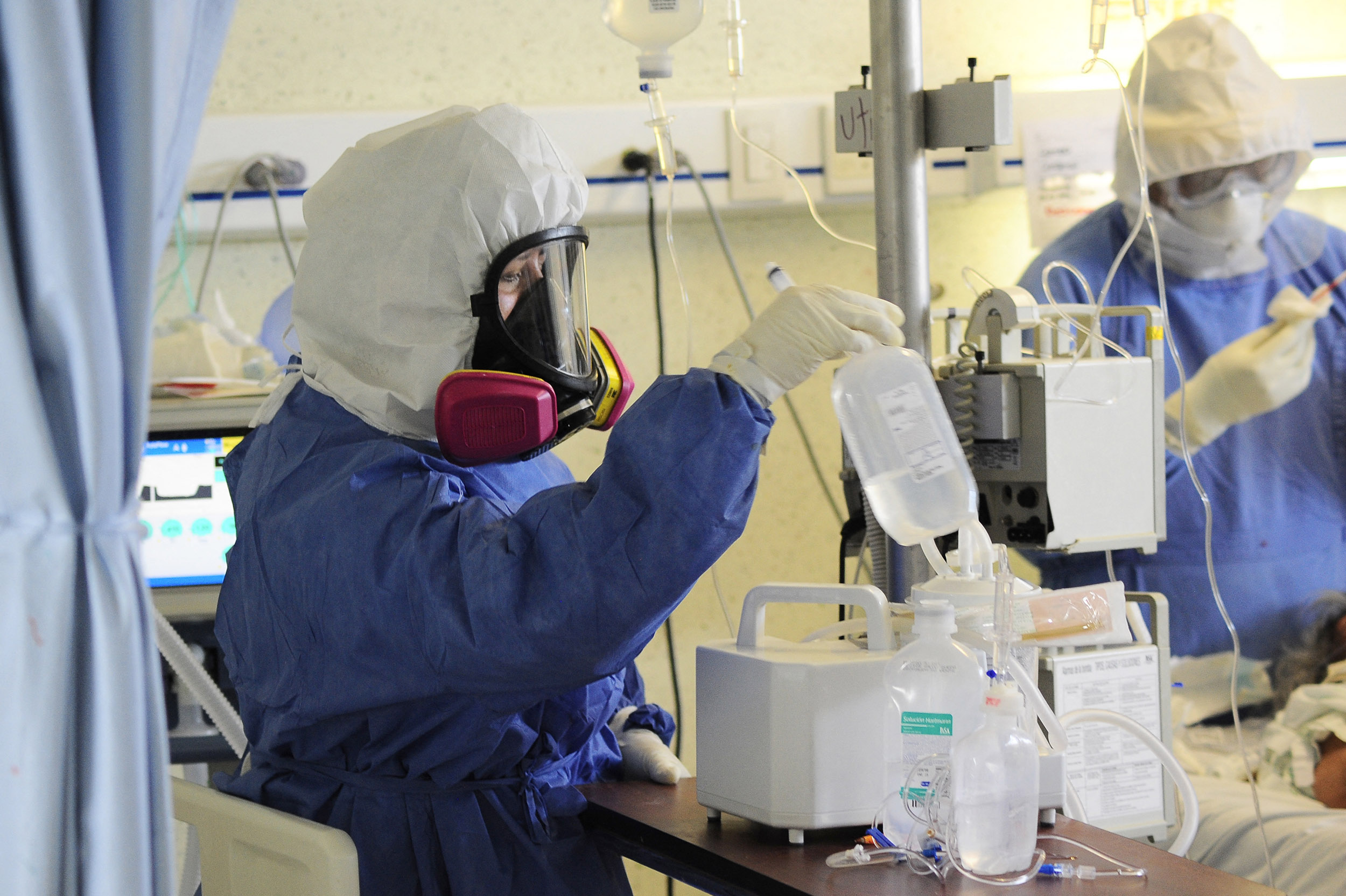
A health worker attends to a coronavirus patient on life support in Atlacomulco, Mexico, on May 28. Ricardo Castelan Cruz/Eyepix/Abaca/Sipa/AP
Mexican authorities recorded more deaths Wednesday than any other day since the Covid-19 pandemic began.
Health officials said 1,092 coronavirus-related fatalities were identified in 24 hours -- more than doubling the previous single-day record. The previous high, 501 deaths, was announced last week.
More than 11,700 virus-related deaths have been recorded in the country.
An important caveat: Deputy Health Secretary Hugo López Gatell has consistently said the vast majority of deaths reported each day did not occur the day they were reported. Delays in counting deaths attributed to the virus mean that the deaths reported each day have occurred over the past several weeks.
Another record: Authorities said they also identified another 3,912 cases of Covid-19 -- another daily record and the second day in a row that Mexico had its largest daily increase of new cases.
Mexico has now recorded 101,238 cases -- surpassing 100,000 cases for the first time and becoming the 14th country worldwide to do so, according to Johns Hopkins University's tally.
From journalist Rodrigo Pedroso in Sao Paulo

A gravedigger working at the Nossa Senhora Aparecida cemetery where Covid-19 victims are buried in Manaus, Brazil, on June 2. Michael Dantas/AFP/Getty Images
Brazil registered a record number of coronavirus-related deaths for the second day in a row on Wednesday.
The country's health ministry reported 1,349 new Covid-19 fatalities in the previous 24 hours, raising the total to 32,548.
The ministry also recorded 28,633 new confirmed cases Wednesday, for a total of 584,016.
Despite the rise in cases, parts of the country started loosening virus-related restrictions this week.
More deaths in Rio: The Brazilian state of Rio de Janeiro also recorded a record number of coronavirus-related deaths in a day, according to the state health secretary.
Authorities said Wednesday that 324 Covid-19 deaths had been identified in the past 24 hours, bringing the statewide total to 6,010 fatalities.
The state also recorded 2,508 new confirmed cases -- taking the total there to 59,240.
The city of Rio de Janeiro began opening some nonessential businesses and activities Tuesday after an announcement from Mayor Marcelo Crivella Monday. Crivella said he expects the Brazilian city to “return to normal” in early August.
From CNN's Milena Veselinovic
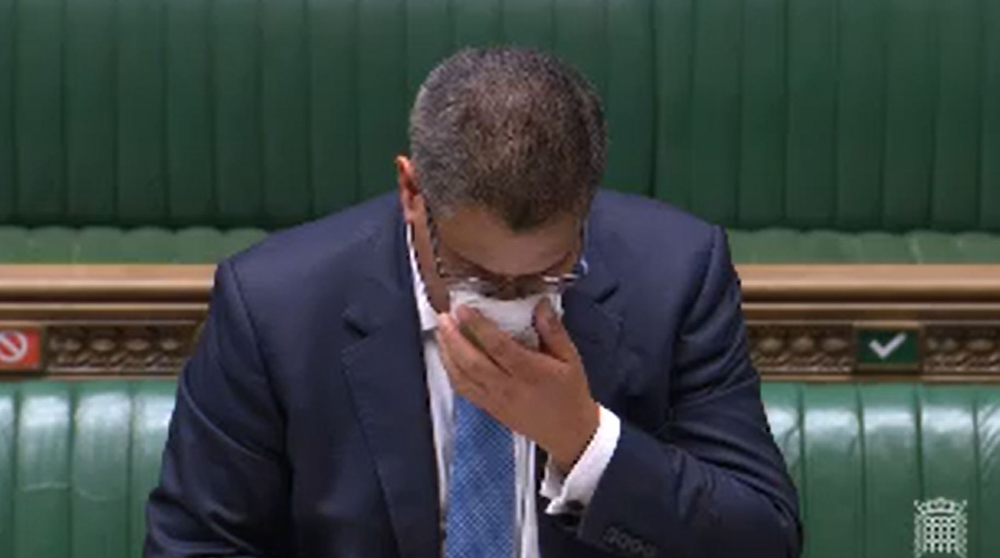
Business Secretary Alok Sharma wipes his face during a speech in the House of Commons, London. Sharma has been tested for coronavirus after becoming visibly unwell in the debating chamber. House of Commons/PA Images via Getty Images
UK Business Secretary Alok Sharma has been tested for coronavirus and is self-isolating, after looking visibly unwell while giving a statement at the UK Parliament on Wednesday.
Sharma was seen sweating profusely and repeatedly wiping his face with a handkerchief and holding his forehead during his speech at the House of Commons.
“Secretary of State Alok Sharma began feeling unwell when in the chamber delivering the second reading of the Corporate Governance and Insolvency Bill. In line with guidance he has been tested for coronavirus and has returned home to self-isolate,” the press office for Sharma's Department for Business, Energy and Industrial Strategy told CNN.
Hundreds of MPs returned to UK Parliament to take part in a socially distanced voting procedure on Wednesday.
From CNN's Rodrigo Pedroso in Sao Paulo
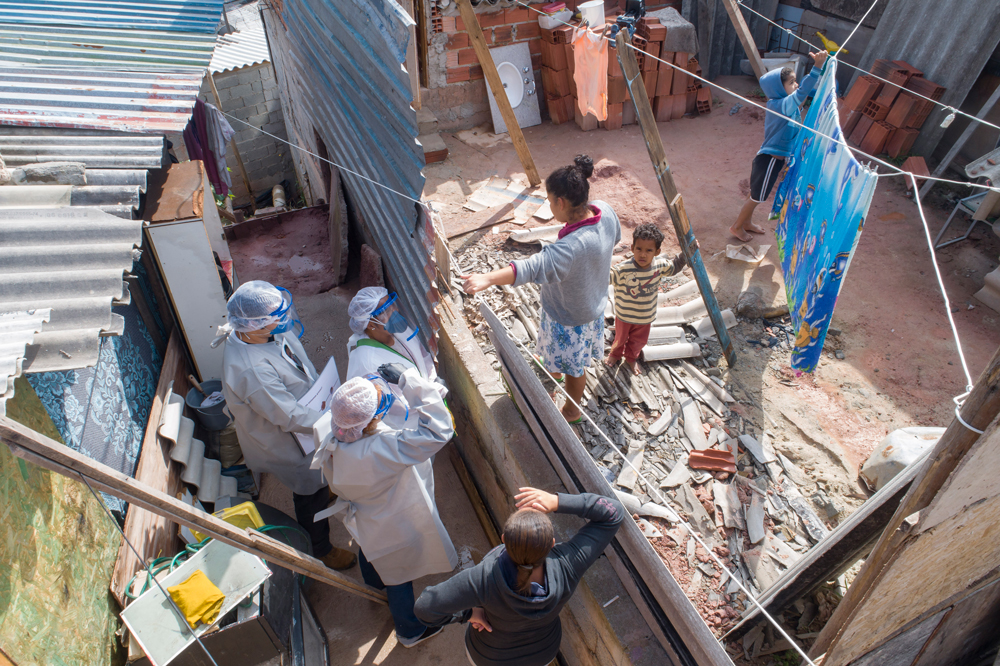
Health workers visit a squatters camp to conduct examinations in Sao Bernardo do Campo, greater Sao Paulo area, Brazil, on June 3. Andre Penner/AP
Sao Paulo's government has projected that its coronavirus cases could double by the end of June.
By the end of May, Sao Paulo state – which includes the city of Sao Paulo – had reported a total of 109,698 cases. The government now projects that by the end of June, the cases could reach between 190,000 to 265,000, the state’s Vice-Gov. Rodrigo Garcia said at a news conference Wednesday.
On Tuesday, the state reported a record 327 daily coronavirus-related deaths.
Claiming the advance of the epidemic is "within the predicted dimension,” Garcia said, “this increase we've seen in the past few days is not surprising. In April, the epidemic grew 10 times. In May, 3.6 times. For June, we expect the number of cases to grow between 1.7 and 2.4 times.”
On Wednesday, Sao Paulo reported 5,188 new coronavirus cases -- taking the state's total to 123,483.
Last week, the mayor of Sao Paulo city announced a gradual reopening of certain sectors, despite the continued spike of infections and deaths.
Source:https://edition.cnn.com/world/live-news/coronavirus-pandemic-06-04-20-intl/index.html
Here are the key developments from the last few hours:
Known coronavirus cases pass 6.4 m. According to Johns Hopkins University, there have been 6,430,705 known coronavirus cases so far, and 385,947 deaths reported.
Brazil looks to reopen despite record coronavirus deaths. Brazil registered a record number of daily deaths from the novel coronavirus for a second consecutive day, according to Health Ministry data released on Wednesday, even as city and state authorities move aggressively to open commerce back up. The nation recorded 1,349 new coronavirus deaths on Wednesday and 28,633 additional confirmed cases, the data showed. Brazil has now registered 32,548 deaths and 584,016 total confirmed cases. In Brazil, right-wing President Jair Bolsonaro has repeatedly downplayed the threat of the virus, saying on Tuesday that death was “everyone’s destiny.”
George Floyd had coronavirus, according to autopsy. Floyd tested positive for coronavirus, according to a full autopsy report released by the Hennepin county medical examiner’s office. The report noted that the virus was not a contributing factor in his death and that Floyd was asymptomatic.KSTP news reports: “A postmortem nasal swab was taken, which confirmed that Floyd was positive for SARS-CoV-2, the virus that causes COVID-19. It is noted that Floyd was known to be positive for Covid-19 on April 3. The postmortem positivity likely reflects asymptomatic but persistent PCR positivity from previous infection, the report said.”
Mexico sees deaths twice as high as previous record. Mexican health authorities reported 1,092 coronavirus deaths on Wednesday, the highest toll in one day so far, with total infections surging past 100,000. The number of deaths was more than twice a previous record, and daily infections were also at an all time high of 3,912. The additions bring the total number of known cases to 101,238 and deaths to 11,729. Health authorities have previously said the real number is higher.
California: rise in Covid-19 cases raises fears over reopening and protests. The number of coronavirus cases in California is on the rise after weeks of optimism that infections had slowed, raising fears that plans to reopen counties, along with mass protests against police brutality, could accelerate transmission of the virus.According to numbers from Johns Hopkins University, which has been tracking coronavirus cases and deaths, California is one of 20 states that have seen an uptick in cases in the past five days.
Coronavirus crisis could cause $25tn fossil fuel industry collapse. The coronavirus outbreak could trigger a $25tn (£20tn) collapse in the fossil fuel industry by accelerating a terminal decline for the world’s most polluting companies.A study has found that the value of the world’s fossil fuel reserves could fall by two-thirds, sooner than the industry expects, because the Covid-19 crisishas hastened the peak for oil, gas and coal demand.The looming fossil fuel collapse could pose “a significant threat to global financial stability” by wiping out the market value of fossil fuel companies, according to financial thinktank Carbon Tracker.
Spain’s congress voted to approve a sixth and final two-week extension of the country’s state of emergency. It has been in effect since 14 March and Wednesday’s vote means that the exceptional measures that have underpinned one of Europe’s strictest lockdowns will now remain in force until 21 June.
The UK’s business secretary Alok Sharma went into self-isolation after beginning to feel unwell in the House of Commons chamber.He was delivering the second reading of the corporate governance and insolvency bill.
WHO reports 100,000 new cases a day for five days. The World Health Organization has received reports of 100,000 new cases of coronavirus every day for the past five days, as the outbreak gathers pace in various regions around the world, its director general has said.
The WHO director general, Dr Tedros Adhanom Ghebreyesus, also said it has resumed trials of hydroxychloroquine, an arthritis drug that had been used to treat Covid-19 patients, after reviewing studies that apparently showed it was dangerous.